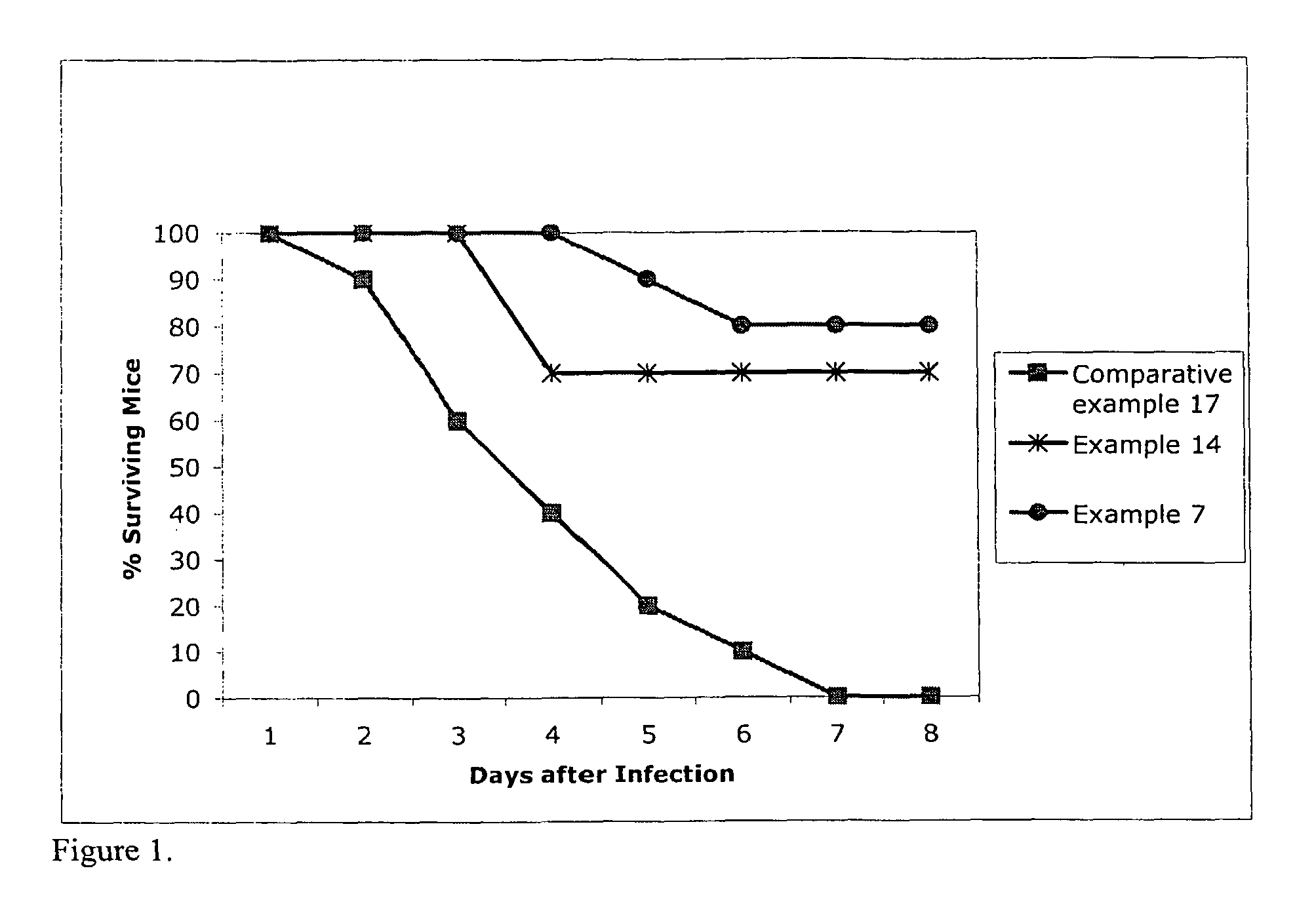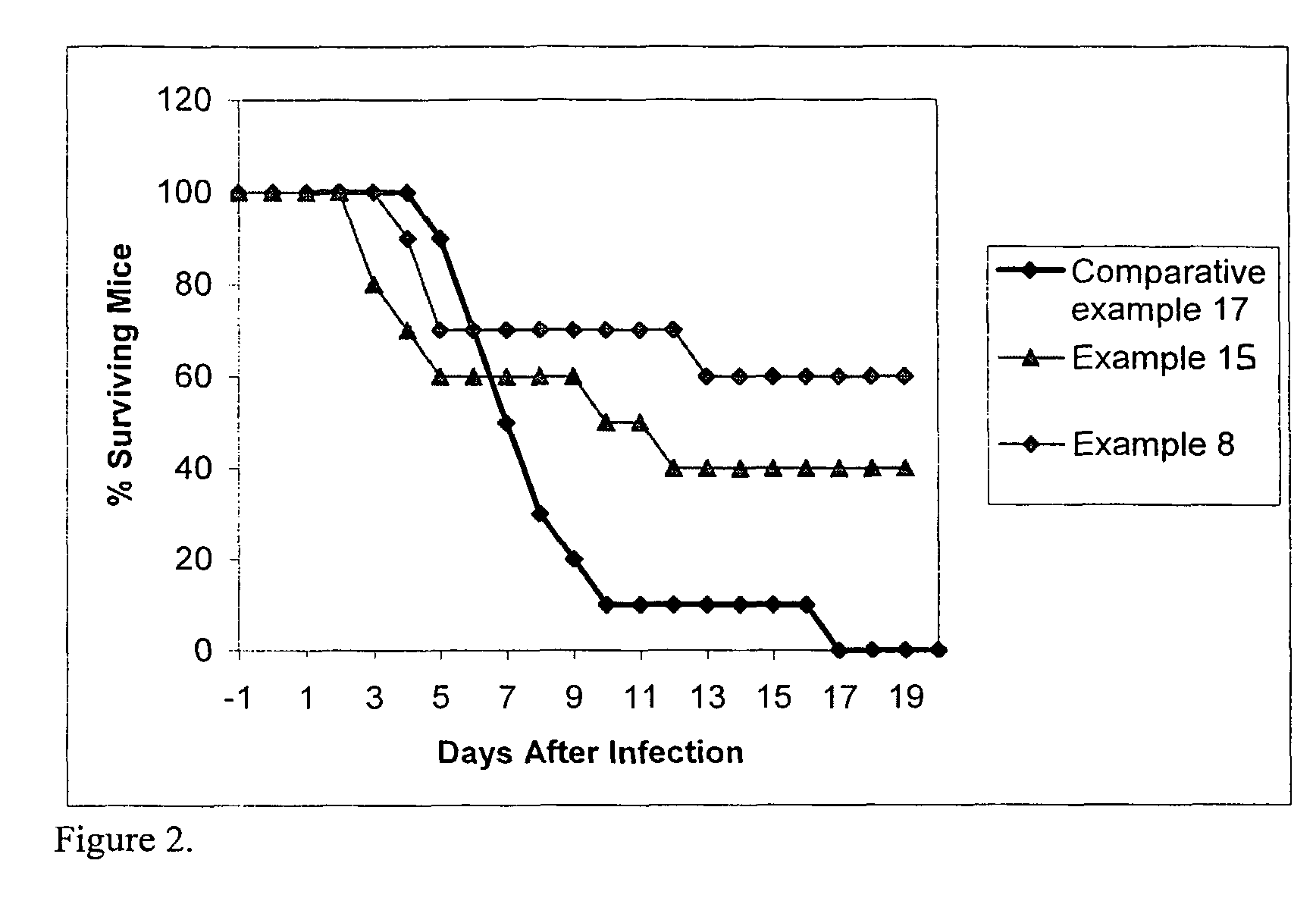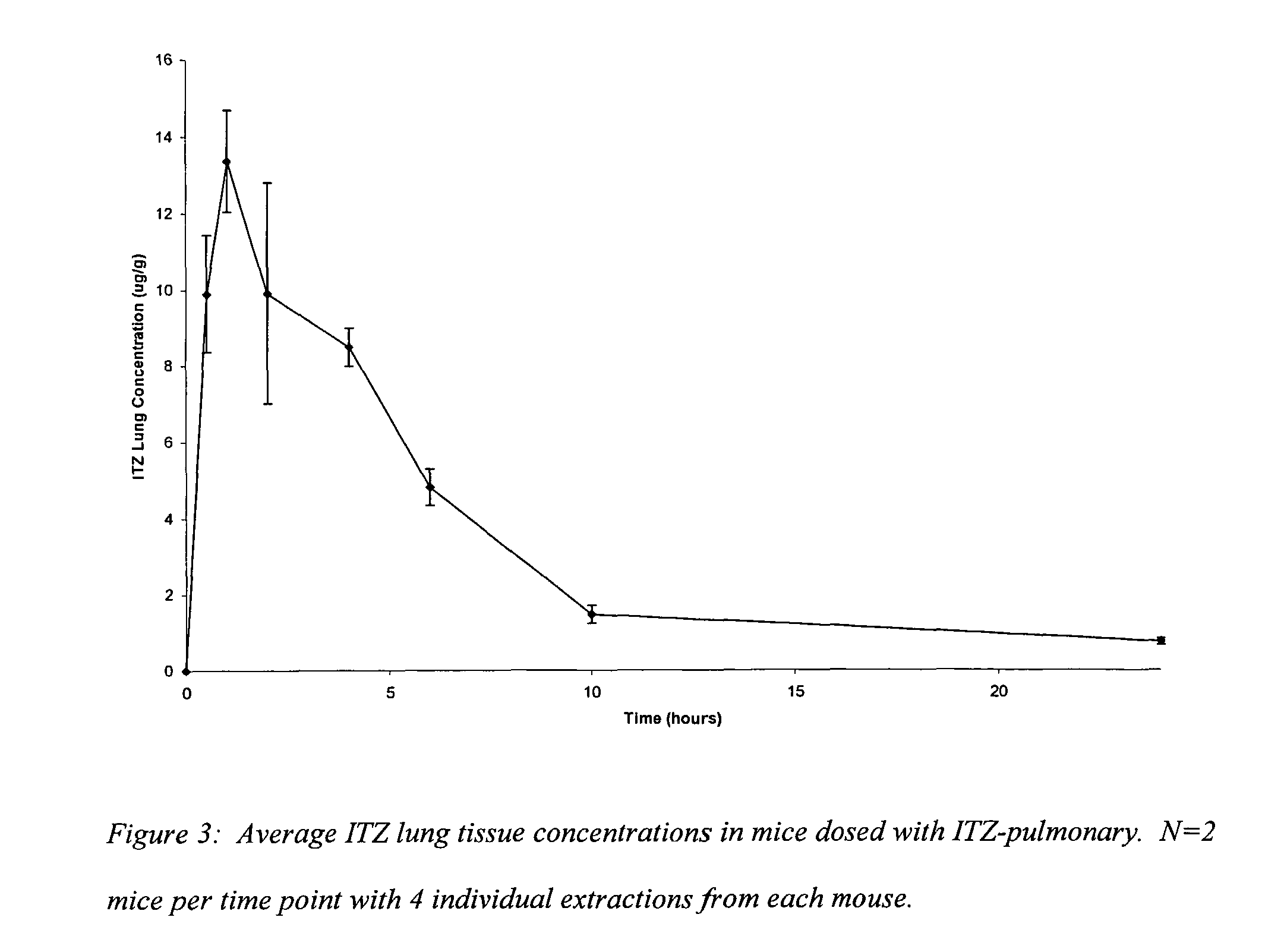Enhanced delivery of drug compositions to treat life threatening infections
a drug composition and enhanced technology, applied in the direction of drug compositions, aerosol delivery, spray delivery, etc., can solve the problems of 10 to 20% of the agent reaching the lung, the inability to develop respirable micronized suspensions of poorly soluble compounds, and the inability to meet the requirements of drug compositions, so as to overcome the poor bioavailability of drugs, and improve the effect of drug composition delivery
- Summary
- Abstract
- Description
- Claims
- Application Information
AI Technical Summary
Benefits of technology
Problems solved by technology
Method used
Image
Examples
example 1
Preparation of Particles and Respirable Aggregates Using an SFL Method
[0083]SFL powders are prepared from a homogenous organic feed solution. The feed solution contains a 1:1 ratio of ITZ and polysorbate 80 dissolved in acetonitrile (0.3% w / v total solids). The feed solution is then atomized directly into liquid nitrogen to product frozen particles. The particles are separated from the liquid nitrogen, transferred to a non-insulated container and lyophilized using a VirTis Advantage Benchtop Tray Lyophilizer (VirTis Corp., Gardiner, N.Y.) equipped with a liquid nitrogen trap to condense sublimed organic solvents. The primary drying phase is performed at −40° C. for 24 hours. The shelf temperature is then ramped up at a rate of 0.9° / min to 25° C. where the secondary drying phase is conducted for a minimum of 12 hours. A vacuum of 200 mTorr is maintained for the primary drying phase and increased to 100 mTorr for the remainder of the freeze-drying cycle.
[0084]Mean particle size=20.7 μ...
example 2
Nebulization of Respirable Aggregates Produced Using an SFL Method
[0085]Particles from example 1 are re-dispersed in water to form a concentration of 20 mg / ml ITZ. The suspension is nebulized using an Aeroneb® Pro nebulizer (Aerogen Inc., Mountain view, Calif.) into an anderson cascade impactor equipped with a 1.8 L spacer. Total Emitted Dose (TED)=4170 μg; Fine particle fraction (FPF)=53.8%; Mass median aerodynamic diameter (MMAC)=2.76 μm; Geometric Standard Deviation (GSD)=2.1.
example 3
Lung Residence Study of Respirable Aggregates Produced Using an SFL Method
[0086]A suspension prepared as in example 2 is administered to seven-week old ICR / Swiss mice (Harlan-Sprague-Dawley, Indianapolis, Ind.), each weighing approximately 32 g and free of disease (prior to testing). Subjects (n=14) are housed in a modified anesthesia chamber and the suspension is aerosolized into the chamber using the same device as in example 2 to test the pulmonary efficacy of the ITZ formulation. Lungs are harvested from 2 separate mice at indicated time points in Table 1. Pharmacokinetic parameters calculated for lung residence data are: Cmax=4.75±2.05 μg / g; Tmax=1 hr; Kd=0.30 hrs−1; T1 / 2=2.28 hrs.
[0087]
TABLE 1Lung concentrationTime / hrs(μg / g)Standard Error0.54.580.8214.751.4523.140.1342.160.6260.950.0810—24—
PUM
| Property | Measurement | Unit |
|---|---|---|
| mass median aerodynamic diameter | aaaaa | aaaaa |
| mass median aerodynamic diameter | aaaaa | aaaaa |
| density | aaaaa | aaaaa |
Abstract
Description
Claims
Application Information
 Login to View More
Login to View More - R&D
- Intellectual Property
- Life Sciences
- Materials
- Tech Scout
- Unparalleled Data Quality
- Higher Quality Content
- 60% Fewer Hallucinations
Browse by: Latest US Patents, China's latest patents, Technical Efficacy Thesaurus, Application Domain, Technology Topic, Popular Technical Reports.
© 2025 PatSnap. All rights reserved.Legal|Privacy policy|Modern Slavery Act Transparency Statement|Sitemap|About US| Contact US: help@patsnap.com



